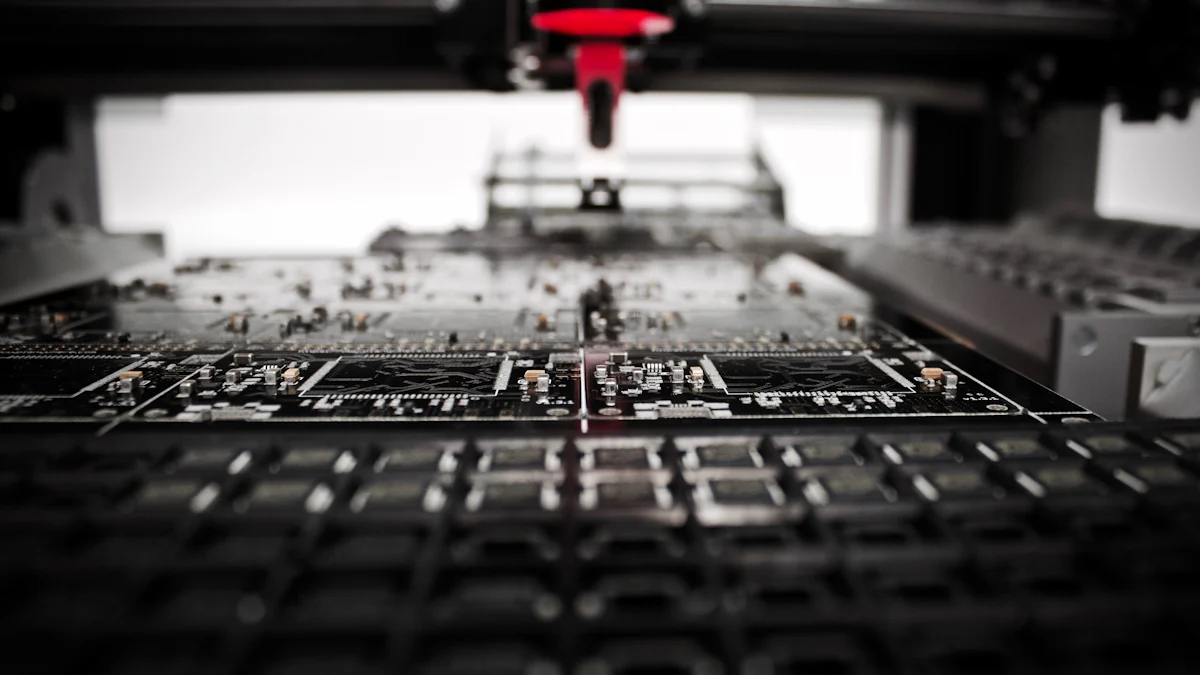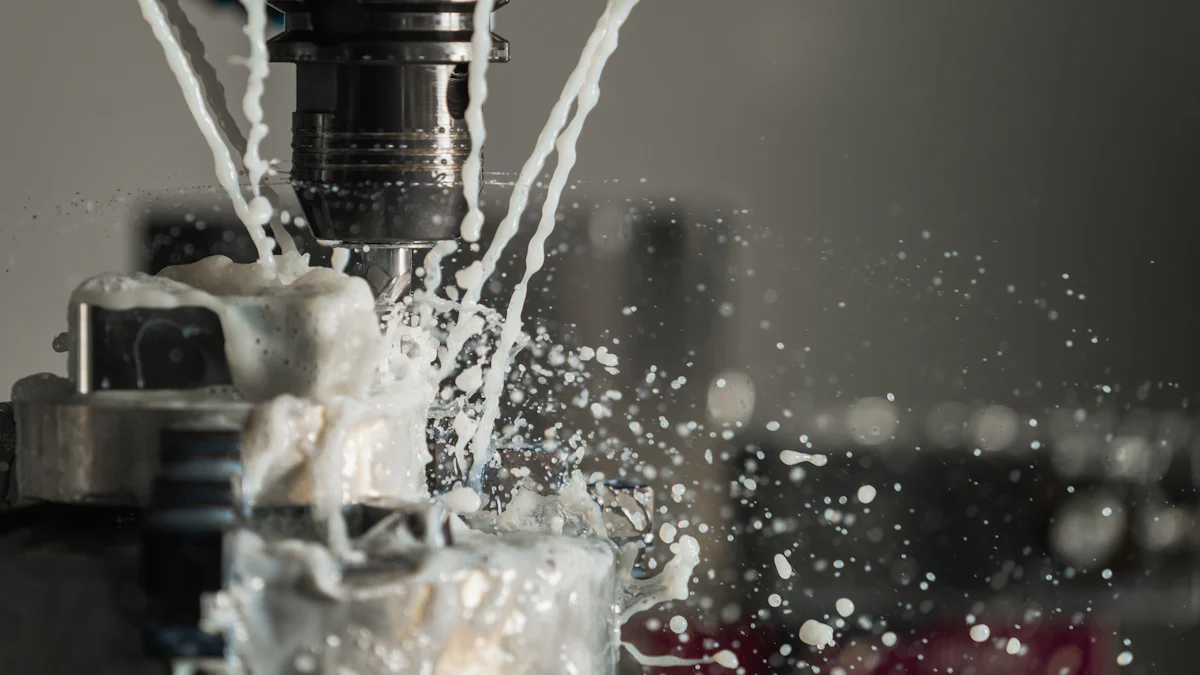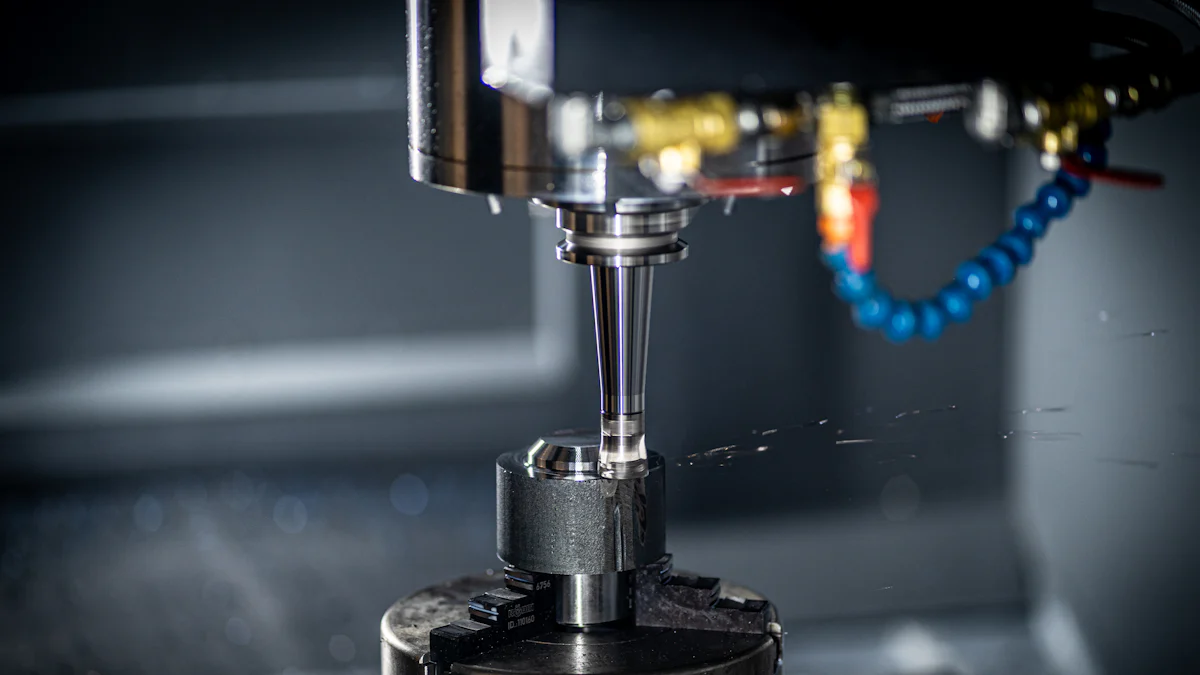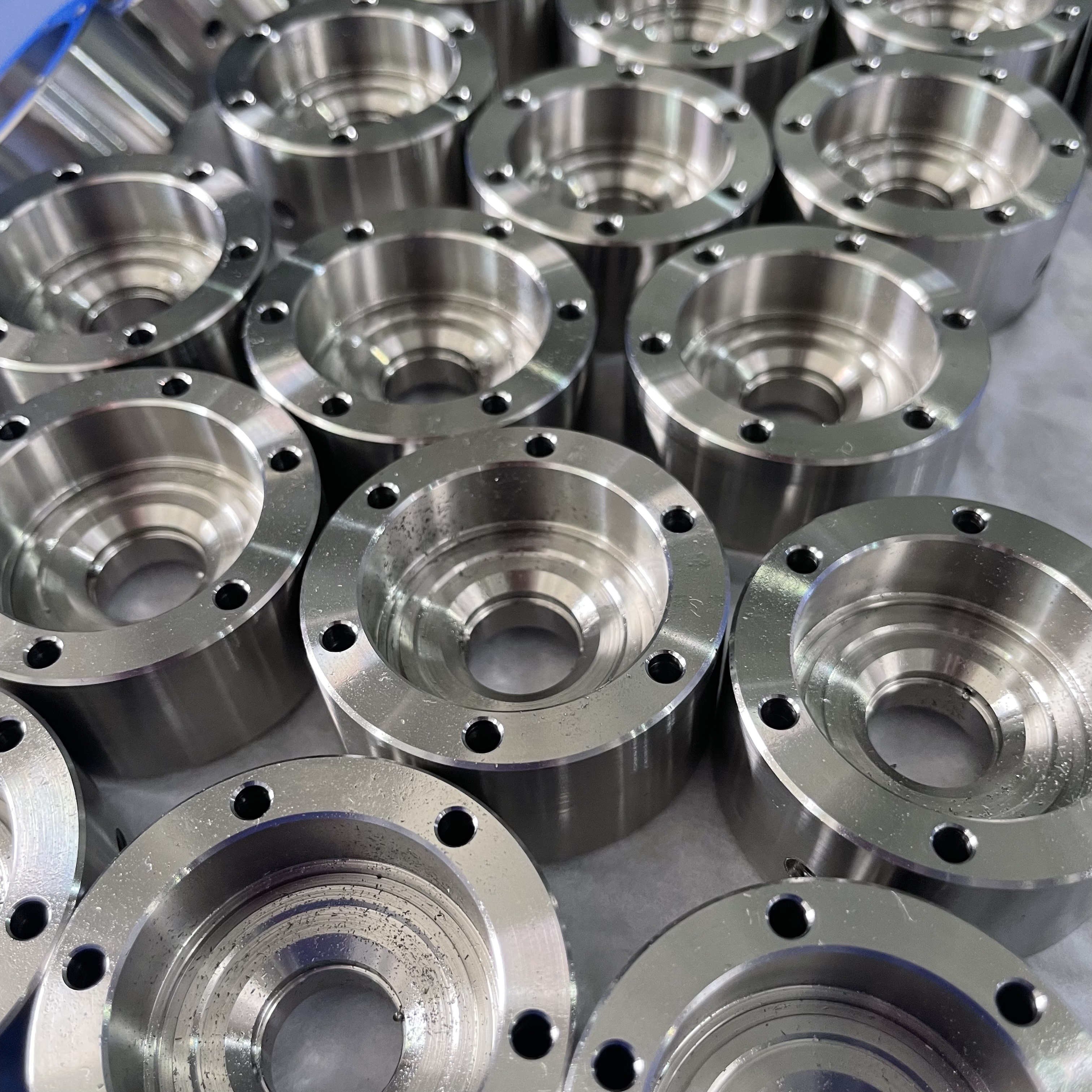How CNC Machined Materials Reduced a Client's Costs

CNC machining transforms manufacturing by improving efficiency and reducing costs. Unlike traditional methods, it automates processes, cutting production time and minimizing human error. This precision reduces material waste, saving you money and supporting sustainable practices. For example, CNC machines optimize cutting paths, ensuring only the necessary materials are used. A single operator can manage multiple machines, lowering labor costs significantly. In fact, companies using CNC machining report up to 50% faster lead times and a 30% increase in production capacity. By adopting CNC machining, you gain cost-effective, high-quality results with minimal environmental impact.
Key Takeaways
CNC machines save time and money by working automatically. They also reduce mistakes made by people.
Using cheaper materials like aluminum and plastics can cut costs but still keep good quality.
Simple designs take less time to make and cost less. Focus on what’s needed and skip extra details.
Working with CNC experts can help you pick the right materials and improve designs to save money.
Ordering many parts at once lowers the cost per item. This spreads the fixed costs and saves more for your business.
Key Factors That Reduce CNC Machining Costs

Material Selection for Cost Reduction
Choosing machinable and cost-effective materials
Material selection plays a critical role in reducing CNC machining costs. By choosing machinable and cost-effective materials, you can lower expenses while maintaining functionality. For example, aluminum is affordable, lightweight, and offers excellent machinability, making it a popular choice. Plastics like ABS and POM are also cost-effective, easy to machine, and suitable for various applications. Metals such as brass and copper provide high machinability and good scrap return, further reducing material costs. Selecting the right material ensures you balance cost with performance, minimizing unnecessary expenses.
Reducing material waste through precision cutting
Precision cutting in CNC machining minimizes material waste, directly impacting cost reduction. CNC machines optimize cutting paths, ensuring only the required material is removed. This precision reduces scrap and maximizes the use of raw materials. For instance, softer materials like nylon and acetal are easier to machine, resulting in less waste and lower machining costs. By focusing on precision, you not only save on material costs but also contribute to sustainable manufacturing practices.
Enhancing Machining Efficiency
Faster production with automated processes
Automation in CNC machining significantly enhances efficiency. Automated processes allow machines to operate continuously, even without supervision, enabling 24/7 production. This reduces downtime and increases throughput. CNC machines also optimize machining paths and speeds, cutting cycle times and boosting production rates. For example, automation eliminates compounding errors and ensures consistent quality, helping you meet high-volume demands quickly. Faster production translates to lower labor costs and higher cost savings.
Reducing tool change time and optimizing workflows
Efficient workflows and reduced tool change times are key factors that influence CNC machining costs. Advanced CNC systems integrate robotics and automation to handle tool changes seamlessly. This reduces delays and ensures uninterrupted production. Optimizing workflows, such as grouping similar operations, further enhances efficiency. By minimizing tool change time, you can lower machining costs and improve overall productivity.
Design Optimization to Reduce Costs
Simplifying designs to minimize machining time
Simplifying part designs is one of the most effective ways to reduce CNC machining costs. Complex designs require more machining steps, increasing time and expenses. By focusing on manufacturability, you can streamline production and achieve cost optimization. For instance, reducing unnecessary features or using standardized components minimizes machining time. This approach not only lowers costs but also improves efficiency in manufacturing.
Avoiding sharp internal corners to reduce material removal costs
Sharp internal corners increase machining complexity and tool wear, leading to higher costs. Adding a radius to internal edges simplifies the machining process and reduces material removal costs. This adjustment also improves tool life and enhances efficiency. By avoiding sharp corners, you can achieve significant savings while maintaining the structural integrity of your design.
Real-World Examples of CNC Machining Cost Reduction

Automotive Industry Applications
Lowering costs for custom and mass-produced car parts
CNC machining has revolutionized the automotive industry by reducing the final cost of parts manufacturing. For custom and mass-produced car parts, it ensures precision and consistency, minimizing defects and rework. Aluminum, a commonly used material, offers excellent machinability and durability. This reduces machining costs and long-term maintenance expenses. Efficient part designs further optimize material usage, lowering material costs and enhancing fuel efficiency.
Cost Saving Strategy | Description |
|---|---|
Durability and Maintenance | Aluminum components last longer and require less upkeep, reducing expenses. |
Machinability | Aluminum's ease of machining speeds up production and cuts energy use. |
Material Optimization | Lightweight designs reduce waste and improve vehicle performance. |
Alloy Selection | Choosing cost-effective alloys balances strength and affordability. |
CNC machining also improves efficiency in high-volume production. Automated processes allow machines to operate continuously, reducing downtime and labor costs. By producing identical parts with tight tolerances, you ensure consistent quality across large batches. This precision enhances engine performance and reduces friction, contributing to overall cost reduction.
Improving efficiency in high-volume production
Automation in CNC machining minimizes manual intervention, enabling faster production cycles. Machines operate 24/7, maximizing output and reducing production costs. Precise control over machining processes reduces material waste, making manufacturing more sustainable. Consistency in part dimensions ensures reliability, which is critical for high-volume automotive production.
Aerospace Sector Innovations
Reducing material waste in high-precision components
In aerospace manufacturing, CNC machining plays a vital role in cost reduction. Automated production processes eliminate inconsistencies and speed up manufacturing cycles. This improves material utilization and reduces waste, which is crucial for managing costs. Material selection, such as aluminum and titanium, ensures a balance between strength and affordability. By implementing efficient tooling strategies, you can further reduce machining costs and improve overall efficiency.
Cost-effective production of lightweight, durable parts
CNC machining enables the creation of lightweight components essential for fuel efficiency in aerospace applications. It allows for complex geometries that are both robust and lightweight, reducing part complexity without compromising durability. High-strength materials like titanium maintain a strong strength-to-weight ratio, ensuring reliability under extreme conditions. The ability to achieve tight tolerances ensures parts meet strict aerospace standards, reducing the likelihood of costly rework.
Small Business Success Stories
Affordable prototyping for startups
For startups, CNC machining offers an affordable solution for prototyping. Outsourcing CNC machining services eliminates the need for expensive equipment and specialized training. You can quickly modify designs by adjusting G-code, allowing for multiple iterations without significant delays. Using affordable materials like aluminum and ABS further reduces material costs, making prototyping accessible for small businesses.
Cost-efficient small-batch manufacturing
CNC machining is ideal for small-batch manufacturing, where precision and efficiency are critical. By utilizing the right CNC machine, you can produce high-quality parts at a lower cost. Standardized components and materials simplify production, reducing complexity and machining costs. This approach ensures cost optimization while maintaining the flexibility needed for small-scale operations.
Practical Tips to Reduce CNC Machining Costs
Collaborate with CNC Experts
Seek guidance on material selection and design optimization
Working with CNC experts can help you achieve significant cost reduction. These professionals provide valuable insights into selecting the right materials and optimizing designs for manufacturability. By simplifying geometries and avoiding unnecessary complexity, you can reduce machining costs and improve efficiency.
Benefit | Description |
|---|---|
Cost-Effective Manufacturing | Experts help lower production costs, allowing you to allocate resources to other areas. |
High-Quality Production Standards | Advanced technology ensures precise outputs that meet your requirements. |
Advanced Technology and Expertise | Skilled technicians handle complex designs, delivering accurate results. |
Wide Range of Materials | Access to diverse materials ensures tailored solutions for your projects. |
Scalability and Flexibility | Experts adapt to varying production scales, accommodating both small and large orders. |
Short Lead Times | Efficient processes enable timely delivery, helping you stay competitive. |
Comprehensive Services | Many providers offer additional services like prototyping and assembly, saving time and costs. |
Partner with experienced CNC machining providers
Experienced CNC machining providers optimize production processes and identify cost-saving opportunities. They deliver high-quality parts at competitive prices. Outsourcing to these providers ensures efficient machine operation and setup time, reducing overall machining costs.
Optimize production processes for better efficiency.
Identify opportunities to save on material costs.
Deliver precise parts that meet your specifications.
Outsource strategically to enhance production efficiency.
Maintain high quality while achieving cost reduction.
Simplify Product Designs
Eliminate unnecessary complexity in designs
Simplifying designs is one of the best practices for CNC machining cost reduction. By following Design for Manufacturability (DFM) principles, you can minimize machining steps and reduce costs. Strategies include standardizing features, maintaining uniform wall thickness, and avoiding deep pockets or sharp internal corners.
Simplify part designs to reduce machining steps.
Avoid undercuts and unnecessary complexity in shapes.
Group similar operations to save time and costs.
Focus on functionality to reduce machining time
Focusing on functionality ensures you retain essential features while minimizing machining costs. Avoid complicated shapes that require specialized machinery. Design parts that need minimal repositioning during machining. This approach reduces machine operation and setup time, leading to cost benefits.
Simplify designs to minimize machining time.
Avoid unnecessary complexity to reduce production costs.
Ensure all features are functional and cost-effective.
Leverage Economies of Scale
Bulk ordering to lower cost per unit
Bulk ordering is a proven strategy for reducing the cost of manufacturing. Fixed costs like tooling and programming remain constant, whether you produce one part or a thousand. By increasing production volume, you spread these costs over more units, significantly lowering the cost per part. Larger orders also allow you to negotiate better material costs, maximizing savings.
Plan for scalability in production runs
Planning for scalability ensures cost efficiency in CNC machining. Simplify designs to minimize machining steps and use standardized components to reduce tooling needs. Engage with suppliers early to identify cost-saving opportunities. Batch production leverages economies of scale, reducing unit costs and improving efficiency.
Larger production runs distribute setup costs over more parts.
Flexible designs help manage costs across different runs.
Batch production enhances cost savings through economies of scale.
Tip: Consider cost-free virtual cutting tests to evaluate designs before production. This step helps you identify potential issues and optimize for cost reduction.
CNC machining delivers unmatched cost-saving opportunities for businesses. Its precision and efficiency reduce waste, enhance productivity, and lower labor costs. Industries like automotive and aerospace have already reaped these benefits, achieving faster production and higher-quality outputs. For small businesses, CNC machining simplifies prototyping and small-batch manufacturing, making innovation more accessible. By collaborating with experts, simplifying designs, and leveraging economies of scale, you can maximize savings while maintaining quality. Although the initial investment may seem high, the long-term advantages—like reduced rework, optimized material use, and continuous operation—make CNC machining a smart choice for modern manufacturing.
FAQ
What is CNC machining, and how does it save costs?
CNC machining uses computer-controlled tools to create precise parts. It saves costs by reducing material waste, minimizing errors, and speeding up production. Automation also lowers labor expenses, making it an efficient manufacturing solution.
Which materials are most cost-effective for CNC machining?
Materials like aluminum, ABS plastic, and brass are cost-effective. Aluminum offers excellent machinability and durability. ABS is lightweight and affordable for prototypes. Brass provides high machinability and good scrap value, reducing overall costs.
How can you optimize designs for CNC machining?
Simplify your designs by avoiding sharp internal corners and unnecessary complexity. Use uniform wall thickness and standardized features. These adjustments reduce machining time, tool wear, and material waste, leading to lower costs.
Is CNC machining suitable for small businesses?
Yes, CNC machining is ideal for small businesses. It enables affordable prototyping and small-batch production. You can outsource services to avoid high equipment costs, making it accessible for startups and small-scale operations.
Can bulk orders reduce CNC machining costs?
Yes, bulk orders lower the cost per unit. Fixed costs like tooling and programming spread across more parts, reducing individual expenses. Larger orders also allow you to negotiate better material prices, maximizing savings.
Tip: Collaborate with CNC experts to identify additional cost-saving opportunities in bulk production.
See Also
How CNC Precision Parts Impact Overall Manufacturing Expenses
Key Material Considerations for CNC Precision Machining Success
Streamlined CNC Machining Solutions for High-Quality Production
Analyzing CNC Milling Costs: Understanding Precision Machining Expenses
Exploring Key Factors That Influence CNC Parts Processing Costs
About US
Follow Us
Your prototype holds unparalleled significance, and we deeply value its uniqueness. Collaborating with you during the preparation phase for running your prototype or parts is a commitment we gladly embrace. Whether it's a single part or a complex assembly, we are dedicated to selecting the optimal tools and pathways to bring your envisioned product to life.
At Precision Fab CNC Machining, we specialize in producing parts for prototypes, short runs, and high-volume production. Our prototyping machine capabilities extend across metal, plastic, and wood machining, with welding fabrication services available to complement and finalize your prototype if required.
Address
Address: Room320 10F, Building A,Nanshan international building, Dayawan District, Huizhou, Guangdong, 516001 China
Contacts
billy@timaycnc.com

